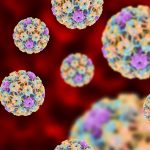Fibromyalgia: A Case for Nature Cure in a 43-year-old Female
Kiran Khaira, MA
Jennifer Brusewitz, ND
Fibromyalgia is a common cause of chronic musculoskeletal pain, affecting approximately 2-8% of the population, predominantly females, with the prevalence increasing with age. The pain is usually accompanied by a multitude of symptoms that can interfere with quality of life. Fibromyalgia is a complex condition of unknown etiology, with a number of risk factors that include genetics, infections, psychological stress, and physical trauma.1
Disease Pathology
Fibromyalgia is a disorder of altered pain regulation. It is considered a centralized pain state in which patients feel higher levels of pain than would be expected, given a particular degree of nociceptive input. As a disorder of central sensitization, fibromyalgia shares many signs and symptoms with other conditions that are due to problems with central sensitization, such as irritable bowel syndrome and migraines. Additionally, since the neurotransmitters that control pain perception are involved in other physiological processes, fibromyalgia patients often experience decreased alertness, mood disturbances, and difficulty sleeping.1
Case Report & Historical Background
The following case illustrates the plethora of symptoms that can fall under the diagnostic umbrella of fibromyalgia. The case also illustrates the utility of Nature Cure, an approach to patient care developed in 19th century Europe. Nature Cure promotes health by reestablishing harmony with nature on the physical, mental, and spiritual levels, and can be used as a powerful foundation for reclaiming health in complex cases.2,3 Our treatment plan was heavily influenced by Dr Henry Lindlahr’s philosophy of Nature Cure, which he learned from Father Kneipp in Germany. After being cured of diabetes by Kneipp with hydrotherapy and therapeutic nutrition, Lindlahr was inspired to attend medical school and practice Nature Cure in the United States.3 Lindlahr taught that the primary cause of disease is a violation of Nature’s laws. This includes divergence from proper breathing, nutrition, and rest, which leads to “lowered vitality, abnormal composition of blood and lymph, and accumulation of waste matter, morbid materials and poisons,”2 all of which create an environment for disease. The return to health is achieved by a return to the laws of Nature.
Lindlahr proposed that the reason that Nature Cure is not more popular in the medical profession is that it is too simple.2 However, this case illustrates that even simple interventions can result in significant improvements in health at all levels. Naturopathic physicians have many therapeutic modalities at their disposal. It is important to remember the power and elegant simplicity of Nature Cure when treating patients.
Patient History
A visibly distressed and agitated 43-year-old female presented to our clinic seeking naturopathic support for an “unknown autoimmune disorder.” The patient’s symptoms were numerous, including poor memory, loss of balance, auditory and visual hallucinations, non-healing skin sores, sensitive skin, swollen feet, weight gain, brain fog, dysgeusia, menorrhagia, hot flashes, cold sweats, insomnia, myalgia, arthralgia, and paresthesias, among others. The patient reported feeling healthy until an unsuccessful dilation and curettage (D&C) a few years ago, which resulted in a uterine infection, warranting a course of antibiotics and second D&C. Her health began to decline after these procedures, starting with episodes of bronchitis and sinus infections, and followed by fecal incontinence, foaming at the mouth, abdominal pain, and vomiting. Since that time, the patient had 2 flu-like episodes, during which she had very painful swollen feet, extreme weakness, malaise and fatigue, resulting in a trip to the ER. It was after the ER visit that she presented to our clinic.
Diagnosis: Physical Exam and Labs
Physical exam at the first visit revealed swollen, non-edematous feet that were cold to the touch. There were numerous, small erythematous lesions (and covered over with eschars) on the patient’s arms and chin, and dark circles under her eyes. The patient’s fibromyalgia myofacial “tender points” tested positive at 18 out of 18 points. A score of 11/18 tender points is diagnostic of fibromyalgia, once other differentials have been ruled out.1 Combined with the patient’s symptoms of mood disturbance, paresthesias, fatigue, myalgia, malaise, dysgeusia, brain fog, and hypersensitivity to stimuli, her presentation fit well with a diagnosis of fibromyalgia.4
Fibromyalgia has normal lab values in the absence of other disorders; hence, lab testing is required to rule out other differentials.1 CBC revealed low-normal RBCs, and high MCV, MCH and RDW, indicating macrocytic anemia, likely caused by low vitamin B12 levels. Antinuclear antibody (ANA) was positive, followed by a reflex quantitative ANA panel, which showed other autoimmune markers to be negative; this made a false-positive ANA possible.
A diagnosis of fibromyalgia requires exclusion of other conditions that can have overlapping symptoms; therefore, further work-up would be warranted to rule out inflammatory bowel disease, Sjogren’s syndrome, hypothyroidism, and organic mood disorders.
The patient’s TSH (previously ordered by her other doctors) was in the normal range; however, T3 and T4 levels should ideally be tested as well, as it is hypothesized that patients who fit the clinical criteria for fibromyalgia often have inadequate thyroid hormone regulation, resulting in 2 of the main features of fibromyalgia: abnormally increased tenderness and generalized pain.5 We decided to consider these tests in the future, should she fail to show improvement over time.
Additionally, it is possible that the patient’s symptoms resulted from an infectious cause. For example, Lyme disease, hepatitis, HIV, and Epstein-Barr virus can all mimic fibromyalgia.1 Investigation of these possible infectious etiologies may be indicated in the future.
Treatment
The focus of our treatment was on addressing the primary causes of disease, as expounded upon by Dr Henry Lindlahr in Nature Cure: The Classic of Natural Health (see Table 1). In it, he speaks first to overall vitality, second to blood and lymph quality, and third to mechanisms of elimination.2 It should be noted that in the allopathic model, interventions beyond drug therapy are being emphasized. A recent clinical review in JAMA reported that “the importance of stress reduction, sleep and exercise should be continually reinforced. Pharmacological therapies can be helpful in alleviating some symptoms [of fibromyalgia], but patients rarely achieve meaningful improvements without adopting these core self-management strategies.”1 As such, our main focus was to counsel on contributing lifestyle factors: increase activity level, improve sleep, reduce anxiety, and support digestion.
Table 1. Lindlahr’s Causes of Disease and Methods of Treatment
| Dr Henry Lindlahr’s Primary Causes of Disease | Natural Methods of Treatment |
| Lowered vitality due to overwork, night-work, excesses, overstimulation, poisonous drugs, and ill-advised surgical operations | Return to Nature, or the establishment of normal habits and surroundings, which necessitates:
|
| Abnormal composition of blood and lymph due to the improper selection and combination of food, and especially the lack of organic mineral salts and other essential nutritional elements | Economy of Vital Force, which necessitates:
|
| Accumulation of waste matter, morbid matter, and poisons due to the first 2 causes, as well as to faulty diet, overeating, the use of alcoholic and narcotic stimulants, drugs [both street and prescription], vaccines, accidental poisoning and, last but not least, to the suppression of acute diseases (Nature’s cleansing and healing efforts) by poisonous drugs and surgical operations | Elimination, which necessitates:
|
Adapted from: Lindlahr H. Nature Cure: The Classic of Natural Health. 20th ed. Holding, PA: Wilside Press; 1922:30-31.
Lifestyle
Movement increases the flow of blood and lymph, and has positive effects on mood and energy. Movement decreases stagnation, therefore is necessary for proper elimination of waste matter, addressing Lindlahr’s third primary cause of disease. Yoga and Qigong were recommended, as yoga has been shown to improve pain in fibromyalgia patients,6 and Qigong has been shown to improve multiple fibromyalgia symptoms.7
Diet
Although fibromyalgia is not thought to be an inflammatory disease, inflammation in the gastrointestinal tract can lead to leaky gut, which increases toxemia, likely contributing to fibromyalgia symptoms.8 As such, we recommended an anti-inflammatory diet and cessation of alcohol use, to address all of Lindlahr’s primary causes of disease. Proper nutrition should result in reduced accumulation of harmful food byproducts in the body, which will result in improved quality of blood and lymph, ultimately increasing vitality.
Additionally, we recommended that the patient include turmeric in her diet. Curcumin, an active constituent of turmeric, is hepatoprotective in its ability to increase glutathione synthesis in the liver, thus increase antioxidant capacity, providing support for the patient’s detoxification mechanisms.9
Digestive Support
The patient’s digestive symptoms and likely low B12 status indicated the need for digestive support. We educated the patient about general guidelines for improving digestive health, including taking 10 deep, conscious breaths before meals to increase parasympathetic tone and lower sympathetic activity,10 thereby enhancing digestion. Similarly, we recommended creating an optimal eating environment by sitting down and eating at a table, as well as taking 1 tsp of apple cider vinegar mixed with a small amount of water before meals, to help with the digestion and absorption of nutrients. The digestive support, like the dietary suggestions, addresses all of Lindlahr’s primary causes of disease.
Supplementation
Supplements were selected to address Lindlahr’s second and third primary causes of disease, including nutrient deficiencies, sleep disruption, anxiety, and decreased mental functioning and energy. We selected only supplements that we considered essential at this time, so as not to overwhelm the patient.
We recommended supplementing with 5000 IU of vitamin D per day, considering the patient’s symptoms and the fact that she lives in the Pacific Northwest, where sunlight is limited. Vitamin D deficiency is not more common in fibromyalgia patients than the rest of the population,11 but optimizing serum vitamin D levels has been shown to reduce the perception of pain in fibromyalgia patients.12 We also advised taking iron (25 mg BID) for 1 month. We thought it prudent to supplement with iron due to the patient’s history of heavy menstrual bleeding, low energy, and low RBC count. Supplementing with iron would likely help treat her anemia, increase her energy levels, and improve her mental concentration and mood.4
Our dietary recommendations resulted in a greater intake of magnesium. However, we also recommended that the patient take a magnesium supplement primarily to help with her insomnia,13 as well as her anxiety and pain. We suggested that she start with 100 mg at bedtime, but to double this dose (assuming bowel tolerance) if her anxiety and sleep failed to improve. As a cofactor for over 300 different enzymes, magnesium affects physiology in numerous ways, including playing a role in nerve activity and the dilation of blood vessels, and having an antispasmodic effect on muscles. As such, deficiency can contribute to symptoms, including paresthesias, hallucinations, muscle pain, and fatigue – all symptoms experienced by our patient. Magnesium supplementation is especially important for fibromyalgia patients, as they are often deficient in magnesium and supplementation can contribute to reductions in pain and tenderness. It is possible that magnesium deficiency is a contributing factor to tenderness at fibromyalgia tender points, as magnesium is a cofactor for ATP synthesis and studies have shown that ATP concentrations are often low at the fibromyalgia tender points.4
Probiotics were prescribed to help rebalance the patient’s gastrointestinal flora, especially considering her history of antibiotic use.14 B Complex was recommended to support B12 levels, which should help treat the patient’s anemia, memory loss, fatigue, sensory disturbances, and mood.4
Homeopathy
After repertorization of the case, we prescribed Secale cornatum 200C at the third visit, to be taken once a day, for 3 days in a row. The rationale for Secale includes ailments beginning after abortion, visual hallucinations, involuntary stool, frothing at the mouth, sour saliva, burning pains, weakness of memory, leg cramps, general exhaustion, and tendency towards hemorrhage. The correct homeopathic remedy should contribute to healing at all levels of the organism.
Pharmaceuticals
A recent meta-analysis revealed that non-pharmacologic treatments for fibromyalgia have broader effects on fibromyalgia symptoms than pharmacologic treatments.15 Amitriptyline was the only pharmaceutical that was shown to have effects on additional fibromyalgia symptoms beyond pain, though the effect was found to diminish over time. Amitriptyline was prescribed by the patient’s rheumatologist; the atypical antidepressant works by increasing the synaptic levels of serotonin and norepinephrine in the central nervous system.16
Follow-up & Outcomes
Two weeks after the patient’s first office visit, she reported that she was sleeping better, her skin was healing, she felt more energy, she was no longer having auditory or visual hallucinations, and she was experiencing less anxiety. However, her myalgia remained unchanged. Since starting the anti-inflammatory diet, the patient lost approximately 10 pounds. The patient reported that she went camping one weekend and consumed processed food and beer, after which she felt immediately worse; this confirmed a dietary role in her symptoms. The patient was hesitant to start taking the amitriptyline that her rheumatologist had prescribed initially, but started taking it by the third office visit, at which time she reported continuation of previous improvements and a significant lessening of the myalgia.
Summary
If the patient is consistent with her dietary changes, gastrointestinal support, and lifestyle changes, we believe that she has a good prognosis and can find significant relief from many of the symptoms of fibromyalgia. Informed diet choices, exercise, proper digestion and elimination, and addressing nutrient deficiencies are most important for the patient at this time. Our hope is that with continued focus on supporting the patient’s ability to boost her vital force and return to the laws of nature, she will continue to move towards health and vitality.
*****
 Kiran Khaira was a naturopathic medical student at the National College of Natural Medicine (NCNM) before graduating in December 2014. Prior to her studies at NCNM, she studied religion, biology and bioethics at Case Western Reserve University, after which she worked with the Clinical Ethics education program at the Johns Hopkins Berman Institute of Bioethics. She plans to provide patient-centered naturopathic primary care after graduation, with a focus on nature cure, nutrition, and homeopathy.
Kiran Khaira was a naturopathic medical student at the National College of Natural Medicine (NCNM) before graduating in December 2014. Prior to her studies at NCNM, she studied religion, biology and bioethics at Case Western Reserve University, after which she worked with the Clinical Ethics education program at the Johns Hopkins Berman Institute of Bioethics. She plans to provide patient-centered naturopathic primary care after graduation, with a focus on nature cure, nutrition, and homeopathy.
 Jennifer Brusewitz, ND, is a graduate of the National College of Naturopathic Medicine (NCNM). She currently practices in Portland, OR, and is a clinical supervisor at NCNM’s teaching clinics. She also investigates and oversees quality assurance standards in the NCNM Medicinary. Dr Brusewitz bases her approach to treating patients on the foundational principle of naturopathic medicine known as “Nature Cure.”
Jennifer Brusewitz, ND, is a graduate of the National College of Naturopathic Medicine (NCNM). She currently practices in Portland, OR, and is a clinical supervisor at NCNM’s teaching clinics. She also investigates and oversees quality assurance standards in the NCNM Medicinary. Dr Brusewitz bases her approach to treating patients on the foundational principle of naturopathic medicine known as “Nature Cure.”
References:
- Clauw DJ. Fibromyalgia: A Clinical Review. 2014;311(15):1547-1555.
- Lindlahr H. Nature Cure: The Classic of Natural Health. 20th ed. Holding, PA: Wilside Press; 1922:13-24, 30-39.
- Friedhelm K, Boyle W. Nature Doctors: Pioneers in Naturopathic Medicine. 2nd ed. Portland, OR: NCNM Press; 2005:1, 227-250.
- Gaby A. Nutritional Medicine. Concord, NH: Fritz Perlberg Publishing. 2011:90, 134-135, 146, 578-580.
- Pizzorno JE, Murray MT, eds. Textbook of Natural Medicine. 4th ed. St Louis, MO: Elsevier/Churchill Livingstone; 2013:1374-1383.
- da Silva GD, Lorenzi-Filho G, Lage LV. Effects of yoga and the addition of Tui Na in patients with fibromyalgia. J Altern Complement Med. 2007;13(10):1107-1113.
- Chen KW, Hassett AL, Hou F, et al. A pilot study of external qigong therapy for patients with fibromyalgia. J Altern Complement Med. 2006;12(9):851-856.
- Maes M, Leunis JC. Normalization of leaky gut in chronic fatigue syndrome (CFS) is accompanied by a clinical improvement: effects of age, duration of illness and the translocation of LPS from gram-negative bacteria. Neuro Endocrinol Lett. 2008;29(6):902-910.
- Kapoor S. Curcumin and its emerging role in the treatment and prevention of gastrointestinal diseases. 2013;20(3-4):195.
- Jerath R, Edry JW, Barnes VA, Jerath V. Physiology of long pranayamic breathing: neural respiratory elements may provide a mechanism that explains how slow deep breathing shifts the autonomic nervous system. Med Hypotheses. 2006;67(3):566-571.
- Okumus M, Koybasi M, Tuncay F, et al. Fibromyalgia syndrome: is it related to vitamin D deficiency in premenopausal female patients? Pain Manag Nurs. 2013;14(4):e156-e163.
- Wepner F, Scheuer R, Schuetz-Wieser B, et al. Effects of vitamin D on patients with fibromyalgia syndrome: A randomized placebo-controlled trial. PAIN. 2014;155(2):261-268.
- Abbasi B, Kimiagar M, Sadeghniiat K, et al. The effect of magnesium supplementation on primary insomnia in elderly: A double-blind placebo-controlled clinical trial. J Res Med Sci. 2012;17(12):1161-1169.
- Ouwehand AC, DongLian C, Weijian X, et al. Probiotics reduce symptoms of antibiotic use in a hospital setting: a randomized dose response study. Vaccine. 2014;32(4):458-463.
- Perrot S, Russell IJ. More ubiquitous effects from non-pharmacologic than from pharmacologic treatments for fibromyalgia syndrome: A meta-analysis examining six core symptoms. Eur J Pain. 2014;18(8):1067-1080.
- Amitriptyline: Drug information. 2014. UpToDate Web site. http://www.uptodate.com. Accessed August 28, 2014.









